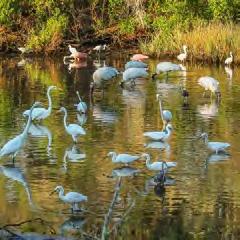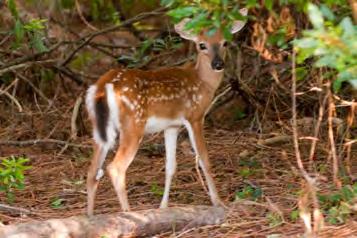
2 minute read
CONSERVATION COMPONENT
Jekyll Island is synonymous with Conservation and Nature. Three years after the purchase of Jekyll Island the Georgia Legislature created the Jekyll Island Authority with the purpose of managing the development while remaining good stewards of the land. The JIA was tasked to ensure no more than one-third of the island would be developed with the remaining two-thirds would be protected under Section 10. The Legislature has amended Section 10 multiple times in order to provide clarification and ensure a majority of the island remains protected.
The task of determining the best course of action for the future of golf on the island included what would become of the “excess” land when holes are eliminated. During the entire Proposed Golf Course Master Plan process, information such as the 2011, Conservation Plan as well as the 2014, updated Jekyll Island Master Plan provided valuable insight. The opportunity to incorporate objectives specifically outlined as goals for Jekyll Island are now implemented within the Golf Course Master Plan. The Jekyll Island Conservation Plan suggests the following:
“Identify opportunities for ecological restoration of disturbed habitats that contribute to long-term ecological health of the island.”
“Identify hydrological alterations, including groundwater impacts and ditching, and evaluate opportunities for wetland enhancement.”
“Reduce fuel loads or create Management Units that preclude the wholesale spread of destructive fire with forested areas.”
“Implement ecological restoration projects through budgeted funding, mitigation opportunities….”
“Where applicable, convert landscape to native species that complement the conservation goals of adjacent natural lands.”
The proposed Jekyll Island Golf Course Master Plan creates an additional 81.7 acres for Conservation. This will allow the Island to meet suggestive directives to re-establish Maritime forest and introduce managed grasslands that will provide wildlife diversity. The proposed plan creates a rare opportunity to restore the original extent of the largest freshwater wetland system on the island and to accommodate the expansion of tidal wetlands over time due to sea level rise. A linkage from the north of Captain Wylly Road and south of Shell Road will provide a wildlife corridor that currently does not exist. The bird rookery will be enhanced through the expansion of the pond to create additional islands in conjunction with establishing a minimum 100’ buffer along the site. Within the total acreage, the opportunity to establish new environmental recreation areas is presented.









